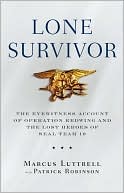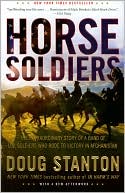The Horse, the Wheel, and Language: How Bronze-Age Riders from the Eurasian Steppes Shaped the Modern World
Search in google:
"If you want to learn about the early origins of English and related languages, and of many of our familiar customs such as feasting on holidays and exchanging gifts, this book provides a lively and richly informed introduction. Along the way you will learn when and why horses were domesticated, when people first rode horseback, and when and why swift chariots changed the nature of warfare."--Peter S. Wells, author of The Battle that Stopped Rome"A very significant contribution to the field. This book attempts to resolve the longstanding problem of Indo-European origins by providing an examination of the most relevant linguistic issues and a thorough review of the archaeological evidence. I know of no study of the Indo-European homeland that competes with it."--J. P. Mallory, Queen's University, Belfast The New York Times - Christine Kenneally Where Proto-Indo-European came from and who originally spoke it has been a mystery ever since Sir William Jones, a British judge and scholar in India, posited its existence in the late 18th century…Anthony…makes the persuasive case that it originated in the steppes of what is now southern Ukraine and Russia, a landscape consisting mainly of endless grasslands and "huge, dramatic" sky. Anthony is not the first scholar to make the case that Proto-Indo-European came from this region, but given the immense array of evidence he presents, he may be the last one who has to…The Horse, the Wheel, and Language brings together the work of historical linguists and archaeologists, researchers who have traditionally been suspicious of one another's methods. Though parts of the book will be penetrable only by scholars, it lays out in intricate detail the complicated genealogy of history's most successful language.
Acknowledgments xi PART ONE: Language and Archaeology 1Chapter One: The Promise and Politics of the Mother Tongue 3 Ancestors 3 Linguists and Chauvinists 6 The Lure of the Mother Tongue 11 A New Solution for an Old Problem 15 Language Extinction and Thought 19Chapter Two: How to Reconstruct a Dead Language 21 Language Change and Time 22 Phonology: How to Reconstruct a Dead Sound 24 The Lexicon: How to Reconstruct Dead Meanings 32 Syntax and Morphology: The Shape of a Dead Language 36 Conclusion: Raising a Language from the Dead 38Chapter Three: Language and Time 1: The Last Speakers of Proto-Indo-European 39 The Size of the Chronological Window: How Long Do Languages Last? 39 The Terminal Date for Proto-Indo-European: The Mother Becomes Her Daughters 42 The Oldest and Strangest Daughter (or Cousin?): Anatolian 43 The Next Oldest Inscriptions: Greek and Old Indic 48 Counting the Relatives: How Many in 1500 BCE? 50Chapter Four: Language and Time 2: Wool, Wheels, and Proto-Indo-European 59 The Wool Vocabulary 59 The Wheel Vocabulary 63 When Was the Wheel Invented 65 The Signifi cance of the Wheel 72 Wagons and the Anatolian Homeland Hypothesis 75 The Birth and Death of Proto-Indo-European 81Chapter Five: Language and Place: The Location of the Proto-Indo-Europe an Homeland 83 Problems with the Concept of "the Homeland" 83 Finding the Homeland: Ecology and Environment 89 Finding the Homeland: The Economic and Social Setting 91 Finding the Homeland: Uralic and Caucasian Connections 93 The Location of the Proto-Indo-European Homeland 98Chapter Six: The Archaeology of Language 102 Persistent Frontiers 104 Migration as a Cause of Persistent Material-Culture Frontiers 108 Ecological Frontiers: Different Ways of Making a Living 114 Small-scale Migrations, Elite Recruitment, and Language Shift 117PART TWO: The Opening of the Eurasian Steppes 121Chapter Seven: How to Reconstruct a Dead Culture 123 The Three Ages in the Pontic-Caspian Steppes 125 Dating and the Radiocarbon Revolution 126 What Did They Eat? 128 Archaeological Cultures and Living Cultures 130 The Big Questions Ahead 132Chapter Eight: First Farmers and Herders: The Pontic-Caspian Neolithic 134 Domesticated Animals and Pontic-Caspian Ecol ogy 135 The First Farmer-Forager Frontier in the Pontic- Caspian Region 138 Farmer Meets Forager: The Bug-Dniester Culture 147 Beyond the Frontier: Pontic-Caspian Foragers before Cattle Arrived 154 The Gods Give Cattle 158Chapter Nine: Cows, Copper, and Chiefs 160 The Early Copper Age in Old Europe 162 The Cucuteni-Tripolye Culture 164 The Dnieper-Donets II Culture 174 The Khvalynsk Culture on the Volga 182 Nalchik and North Caucasian Cultures 186 The Lower Don and North Caspian Steppes 188 The Forest Frontier: The Samara Culture 189 Cows, Social Power, and the Emergence of Tribes 190Chapter Ten: The Domestication of the Horse and the Origins of Riding: The Tale of the Teeth 193 Where Were Horses First Domesticated? 196 Why Were Horses Domesticated? 200 What Is a Domesticated Horse? 201 Bit Wear and Horse back Riding 206 Indo-European Migrations and Bit Wear at Dereivka 213 Botai and Eneolithic Horseback Riding 216 The Origin of Horse back Riding 221 The Economic and Military Effects of Horseback Riding 222Chapter Eleven: The End of Old Europe and the Rise of the Steppe 225 Warfare and Alliance: The Cucuteni-Tripolye Culture and the Steppes 230 The Sredni Stog Culture: Horses and Rituals from the East 239 Migrations into the Danube Valley: The Suvorovo-Novodanilovka Complex 249 Warfare, Climate Change, and Language Shift in the Lower Danube Valley 258 After the Collapse 260Chapter Twelve: Seeds of Change on the Steppe Borders: Maikop Chiefs and Tripolye Towns 263 The Five Cultures of the Final Eneolithic in the Steppes 265 Crisis and Change on the Tripolye Frontier: Towns Bigger Than Cities 277 The First Cities and Their Connection to the Steppes 282 The North Caucasus Piedmont: Eneolithic Farmers before Maikop 285 The Maikop Culture 287 Maikop-Novosvobodnaya in the Steppes: Contacts with the North 295 Proto-Indo-European as a Regional Language in a Changing World 299Chapter Thirteen: Wagon Dwellers of the Steppe: The Speakers of Proto-Indo-European 300 Why Not a Kurgan Culture? 306 Beyond the Eastern Frontier: The Afanasievo Migration to the Altai 307 Wagon Graves in the Steppes 311 Where Did the Yamnaya Horizon Begin? 317 When Did the Yamnaya Horizon Begin? 321 Were the Yamnaya People Nomads? 321 Yamnaya Social Organization 328 The Stone Stelae of the North Pontic Steppes 336Chapter Fourteen: The Western Indo-European Languages 340 The End of the Cucuteni-Tripolye Culture and the Roots of the Western Branches 343 Steppe Overlords and Tripolye Clients: The Usatovo Culture 349 The Yamnaya Migration up the Danube Valley 361 Yamnaya Contacts with the Corded Ware Horizon 367 The Origins of Greek 368 Conclusion: The Early Western Indo-European Languages Disperse 369Chapter Fifteen: Chariot Warriors of the Northern Steppes 371 The End of the Forest Frontier: Corded Ware Herders in the Forest 375 Pre-Sintashta Cultures of the Eastern Steppes 385 The Origin of the Sintashta Culture 389 Warfare in the Sintashta Culture: Fortifications and Weapons 393 Tournaments of Value 405 Sintashta and the Origins of the Aryans 408Chapter Sixteen: The Opening of the Eurasian Steppes 412 Bronze Age Empires and the Horse Trade 412 The Bactria-Margiana Archaeological Complex 421 The Opening of the Eurasian Steppes 435 The Srubnaya Culture: Herding and Gathering in the Western Steppes 437 East of the Urals, Phase I: The Petrovka Culture 441 The Seima-Turbino Horizon in the Forest-Steppe Zone 443 East of the Urals, Phase II: The Andronovo Horizon 448 Proto-Vedic Cultures in the Central Asian Contact Zone 452 The Steppes Become a Bridge across Eurasia 456Chapter Seventeen: Words and Deeds 458 The Horse and the Wheel 459 Archaeology and Language 463Appendix: Author's Note on Radiocarbon Dates 467 Notes 471 References 507 Index 547








